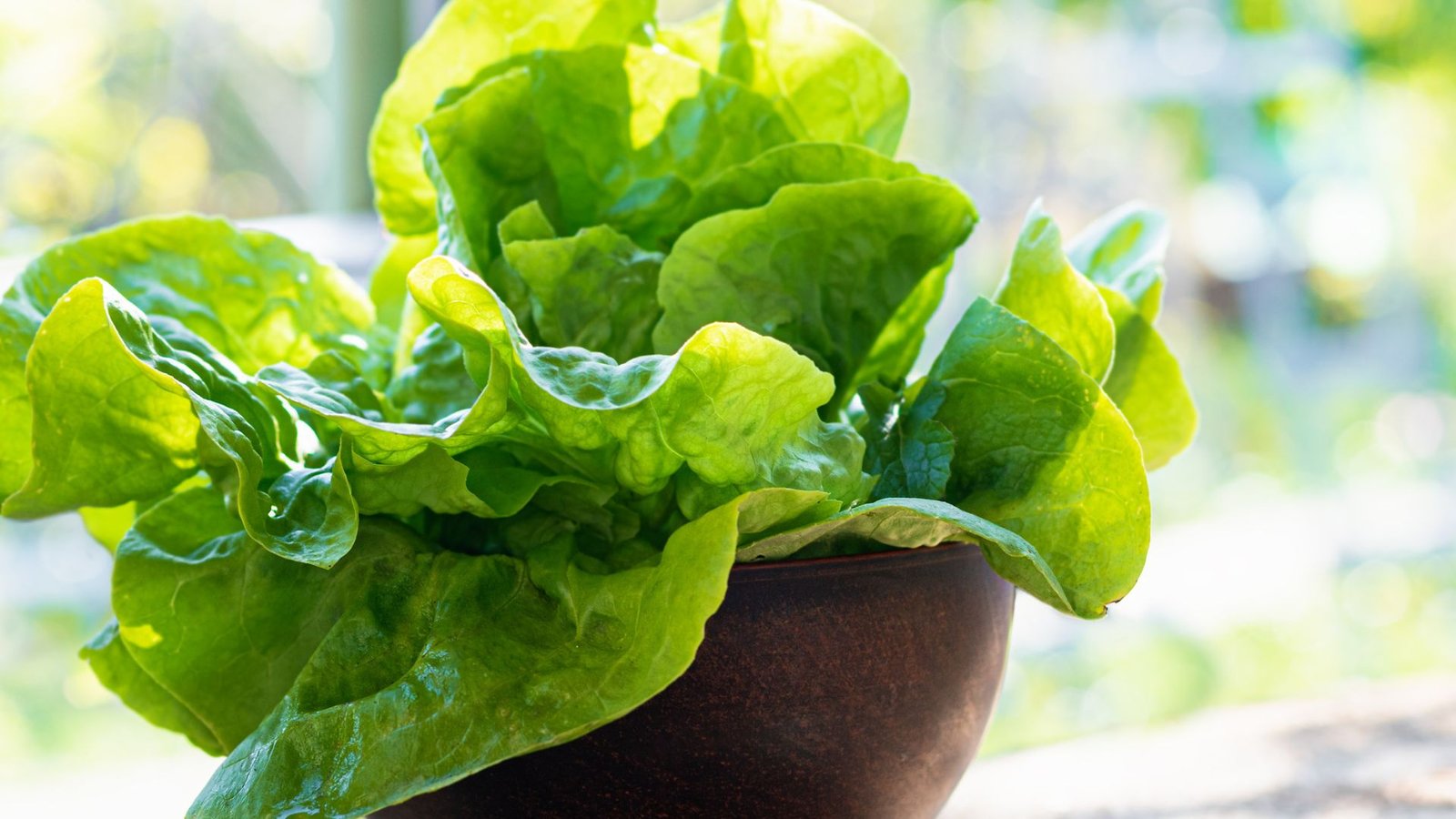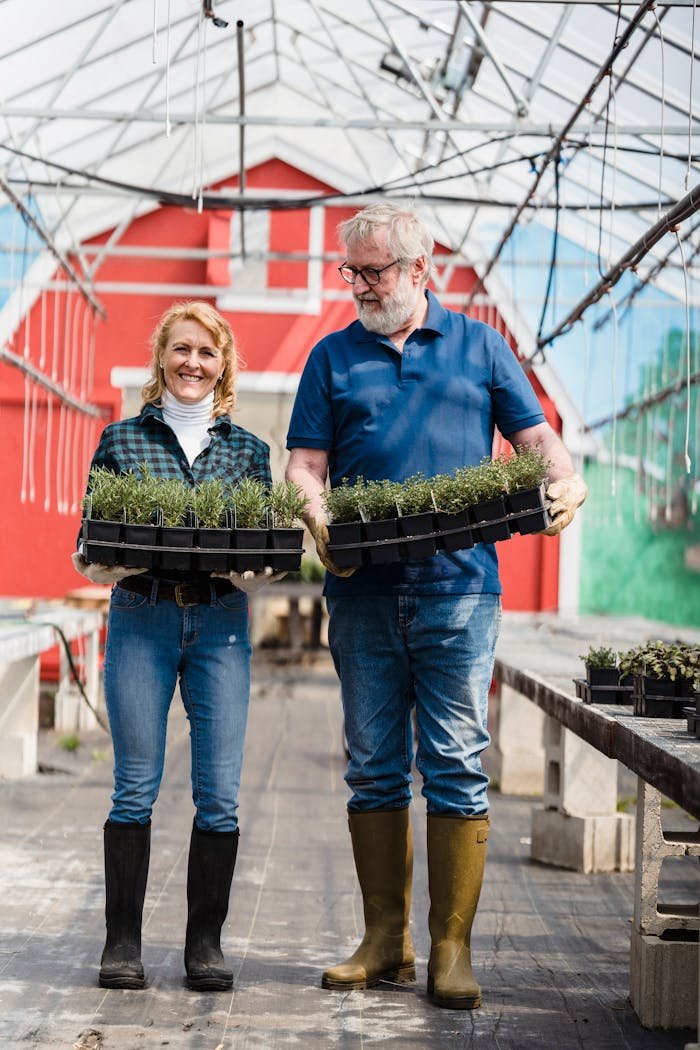Knowing when to sow lettuce seeds can make the difference between a thriving harvest and a failed crop. Lettuce loves cool weather and grows best during early spring and fall, though some varieties can handle light heat. For beginners and experienced gardeners alike, timing is everything. If planted too early, seeds may struggle to sprout; too late, and the plants may bolt. That’s why following a proper lettuce planting guide is essential.
Understanding your zone, the lettuce sowing temperature range, and the ideal lettuce seed depth will help you succeed. Whether you’re directly sowing lettuce seeds or starting indoors, learning the right time sets you up for fresh, crisp greens all season long.
Understanding Lettuce Growth Cycles by Season
Lettuce is a cool-season crop that prefers growing in spring and fall. In spring, seeds can go into the ground as soon as the soil is workable. In fall, seeds should be planted about six weeks before the first frost. Summer growing is harder because lettuce struggles in heat. That’s when gardeners choose bolt-resistant varieties or grow in partial shade. when to sow lettuce seeds is very easy method.
Spring is ideal for baby greens and fast-growing loose leaf types. Summer needs extra care, such as shade cloth or succession planting lettuce every two weeks to avoid bitter leaves. Fall is perfect for larger heads like romaine or butterhead, especially if you follow the fall lettuce planting schedule. Many gardeners in warmer zones even grow lettuce through winter with covers.
The Best Time to Sow Lettuce Seeds (By Region and Climate)
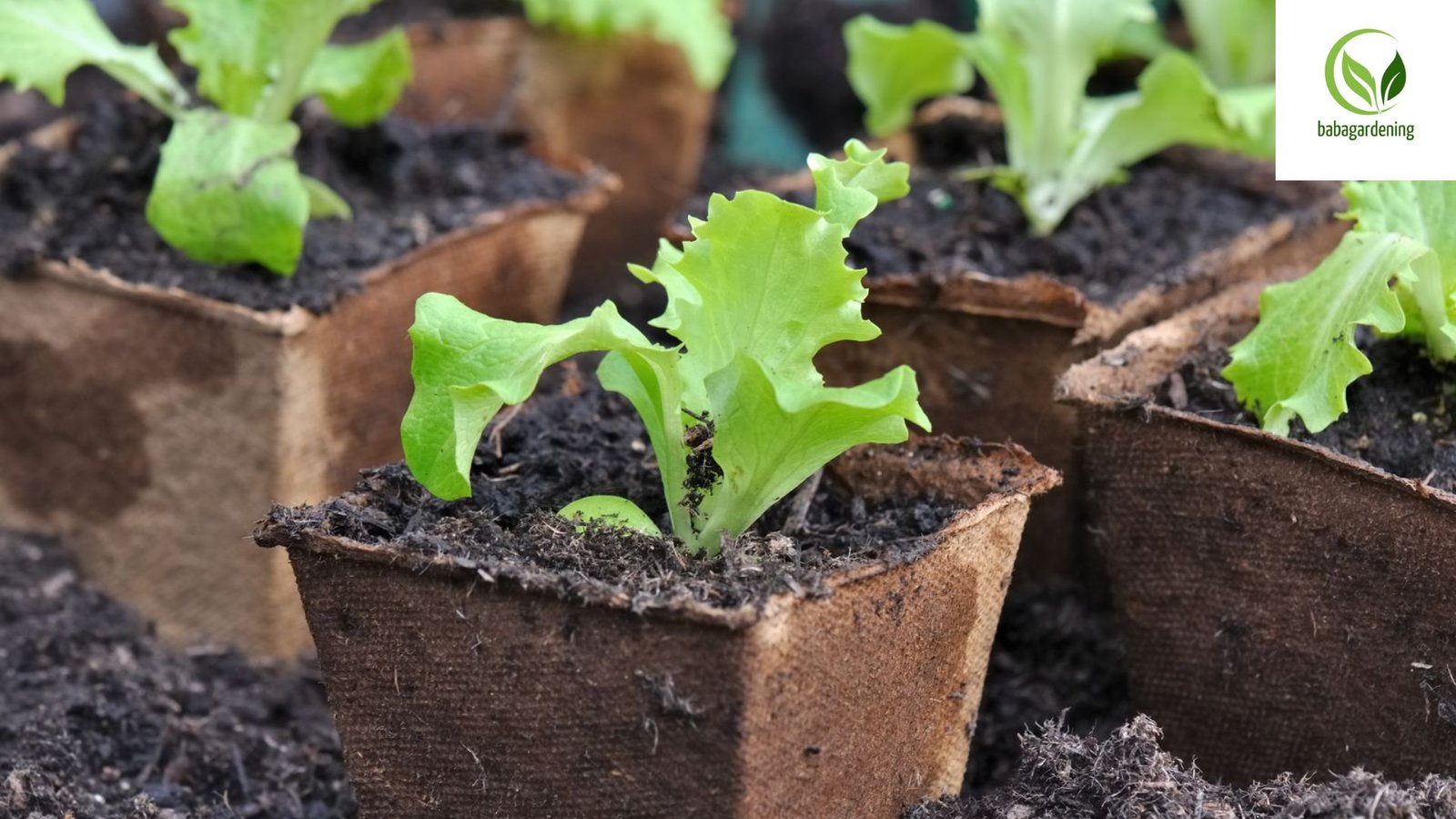
Knowing your USDA growing zone helps you decide when to sow lettuce seeds. In colder zones like 3–5, plant in early April or indoors in March. In zones 6–7, you can sow outdoors in mid-March. Zones 8–10 allow for nearly year-round lettuce, especially in fall and winter. The lettuce sowing temperature range is between 55°F and 75°F.
Check this table for a quick view of ideal sowing times by region:
| USDA Zone | Spring Sowing | Fall Sowing |
| 3–5 | April–May | August |
| 6–7 | March–April | September |
| 8–10 | February–March | October–November |
Use a soil thermometer if unsure. Best temperature for growing lettuce is cool but not freezing. Avoid planting when it’s above 80°F or below 40°F.
Choosing the Right Lettuce Variety for Each Season
Each season suits a different lettuce type. Spring works best for looseleaf or butterhead types. These grow fast and taste tender. Summer needs bolt-resistant or heat-tolerant varieties like Jericho (romaine) or Red Sails. Fall is great for growing crisp head lettuce which takes longer to mature.
Here’s a look at the lettuce varieties for home garden by season:
| Season | Best Types |
| Spring | Butterhead, Looseleaf |
| Summer | Bolt-resistant Romaine, Red Leaf |
| Fall | Crisp head, Winter Density Romaine |
This choice matters because red vs green lettuce types have different growth needs. Red ones often handle heat better but take longer to sprout.
Soil Preparation Before Sowing Lettuce Seeds
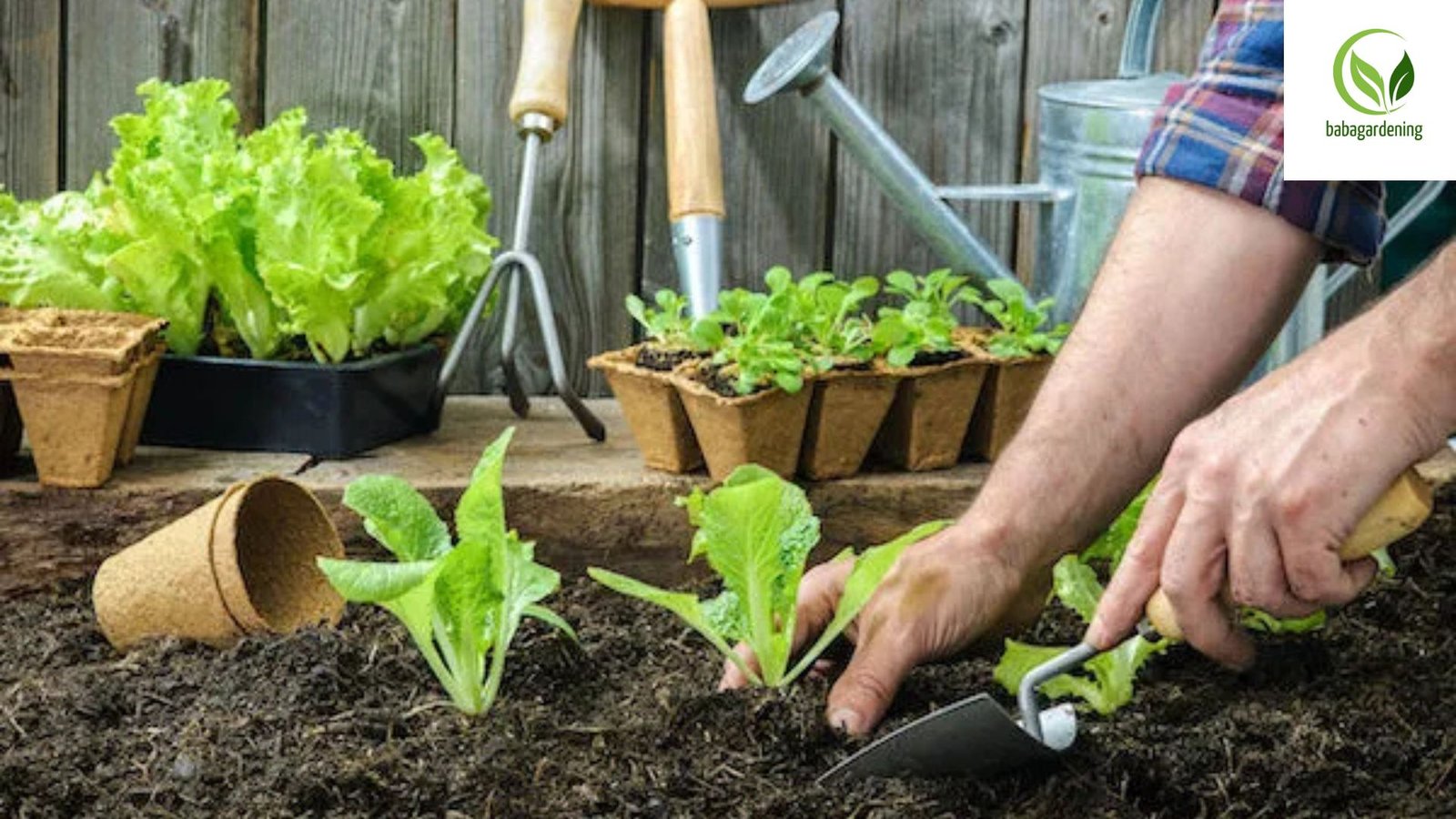
Healthy soil is key for lettuce. The ideal soil should be loose, rich, and full of organic matter. Lettuce soil preparation starts with removing clumps, adding compost, and lightly moistening the top. The pH should be between 6.0 and 7.0. Use worm castings or mushroom compost for extra nutrients.
You don’t need to fertilize often if the soil is rich. Use your hand or a rake to make the surface level. This helps water spread evenly and prevents pooling. Good soil helps with lettuce seed germination time and root growth. Deep roots mean stronger plants.
How to Sow Lettuce Seeds – Step-by-Step Guide
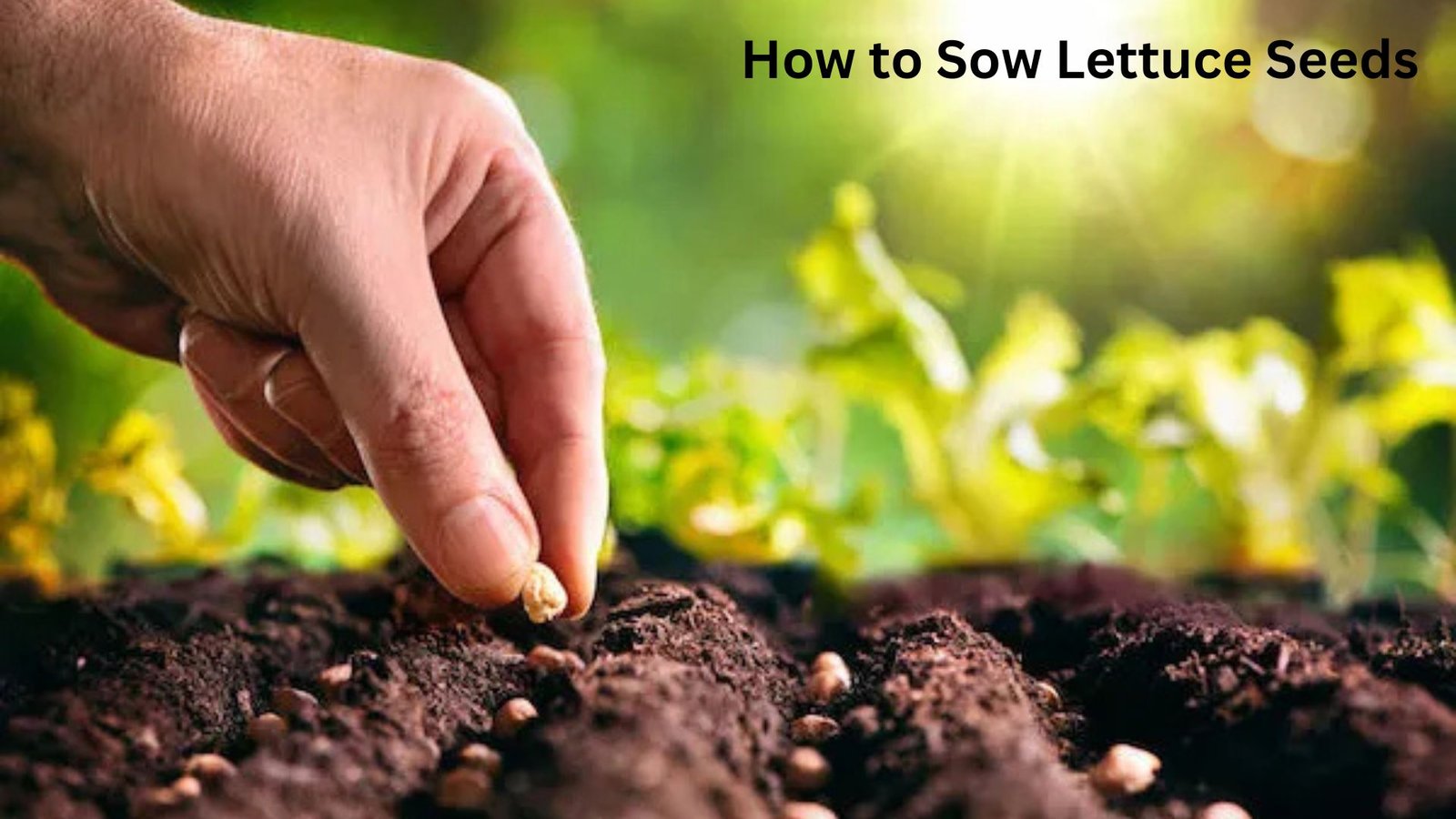
This is your step-by-step lettuce planting tutorial. First, understand that lettuce seeds are tiny. You don’t need to dig holes. Sprinkle seeds on top of the soil and lightly press them in. The correct lettuce seed depth is about 1/8 inch. Cover gently with compost or fine soil.
For lettuce seed spacing, leave 6 inches between head lettuce and 3–4 inches for looseleaf. If you’re unsure how to space lettuce seeds properly, try using a spacing ruler or even a measuring tape. You can also mix seeds with sand to spread them more evenly.
Watering and Light Requirements for Seed Germination
Lettuce seeds must stay moist to sprout. Water with a gentle spray right after planting. Keep the topsoil damp but not soggy. How to water lettuce without overwatering is simple: check the soil daily and water lightly when dry. Heavy watering washes seeds away.
Sunlight is just as important. How much sun does lettuce need to grow? It depends. Looseleaf types need 4–6 hours. Head types need 6–8 hours. In hot areas, partial shade in the afternoon helps prevent bolting in lettuce. Light and moisture are what wake your seeds up.
Protecting Lettuce from Pests and Weather Stress
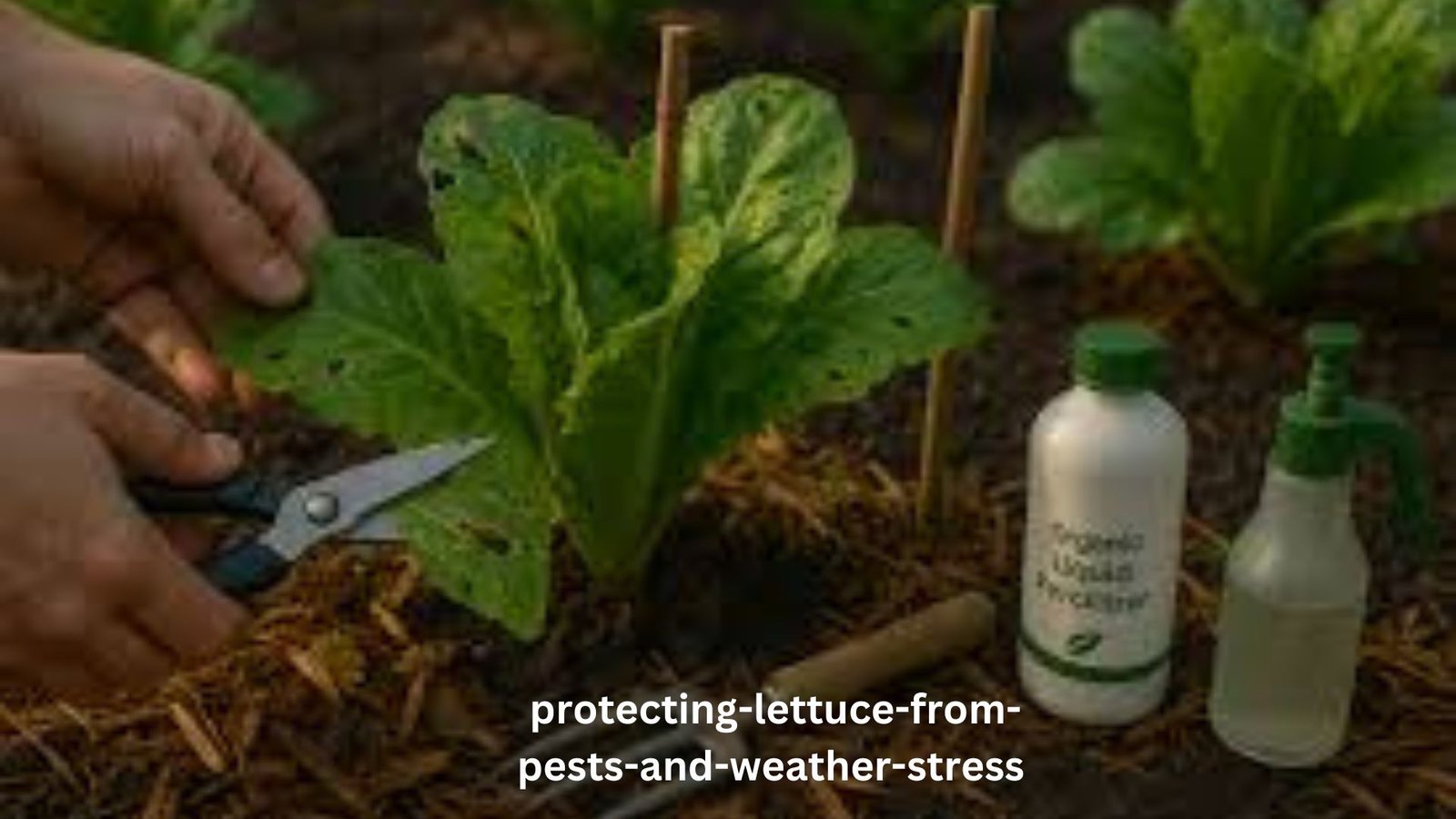
New lettuce plants attract pests like slugs, aphids, and rabbits. How to protect lettuce from slugs and pests starts with using mesh or row covers. These act as shields without chemicals. Lightweight garden fabric keeps bugs out but lets sun and rain in.
Weather can stress plants too. Strong wind, rain, or heat can damage young seedlings. Shade cloth can reduce temperature by 10°F, perfect for tips for growing lettuce in hot weather. Raised beds with hoops make this easy. Even growing lettuce in raised beds helps avoid pests hiding in ground-level soil.
Growing Lettuce in Containers or Indoors (Bonus Tips)
Yes, you can grow lettuce in pots indoors or on a balcony. Use wide, shallow containers with drainage holes. Choose looseleaf or mini romaine for better results. Indoors, you’ll need grow lights if sunlight is limited.
For growing lettuce in containers, use quality potting soil and keep the soil moist. Small pots dry out faster, so check often. Add compost every couple of weeks to keep leaves tender. This method works well for urban gardeners or anyone with limited space.
Harvesting Lettuce at the Right Time
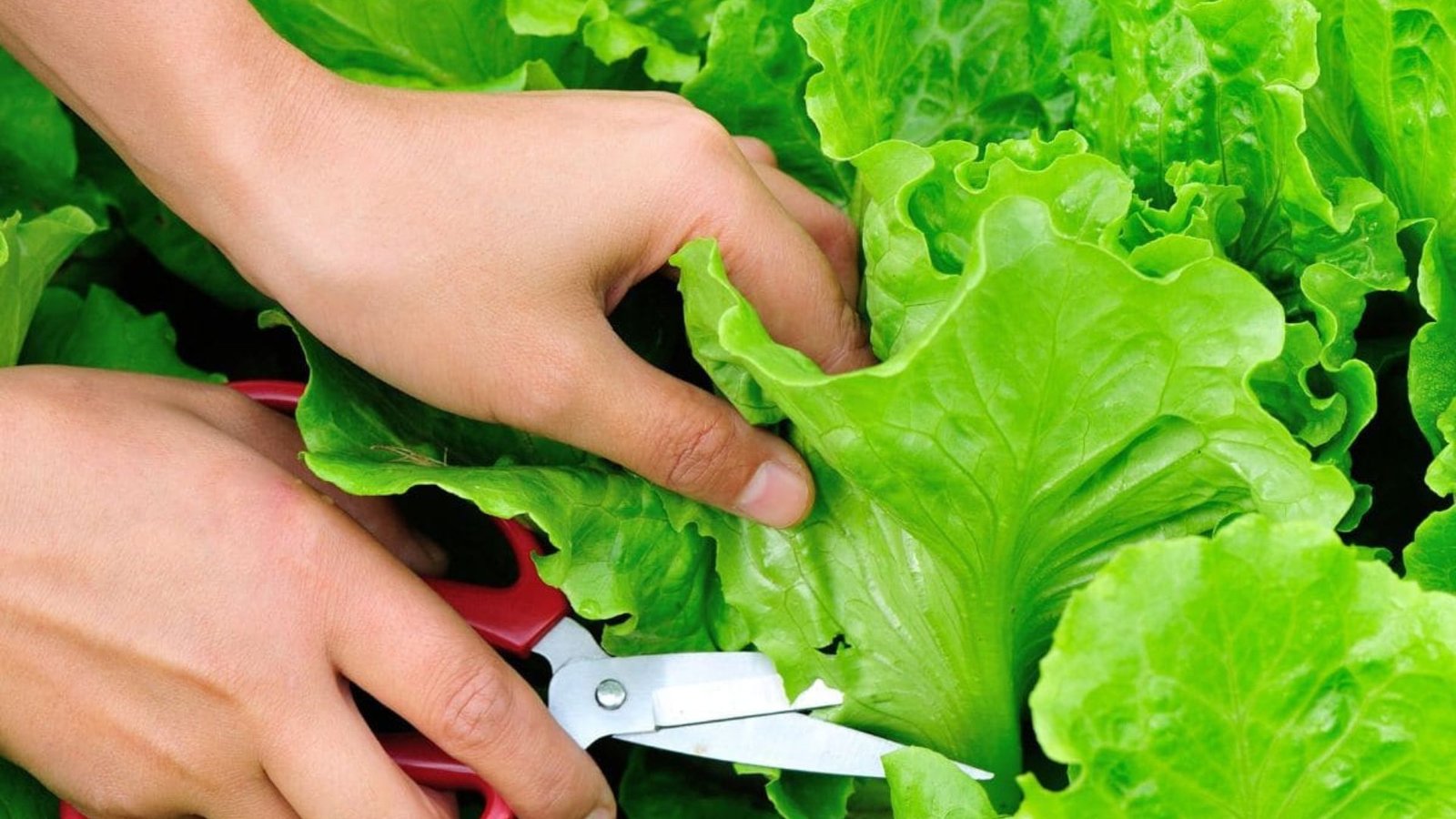
Timing your harvest keeps the flavor sweet. Pick baby greens when they’re 3–4 inches tall. For heads, wait 50–70 days depending on the type. The easiest way to thin lettuce seedlings is to snip the extras when plants are 2 inches tall. This gives room for others to grow.
Use scissors to cut outer leaves first. That’s the cut-and-come-again method. If you harvest the whole head, pull from the base early in the morning. Doing so helps avoid bitter leaves and wilting. After harvesting, rinse your lettuce and pat it dry with a clean towel.
Storing and Using Your Homegrown Lettuce
Nothing beats the taste of fresh lettuce. Homegrown lettuce vs store-bought is no contest—yours is always fresher and tastier. After picking, wash leaves and spin or pat them dry. Store in the fridge in a sealed container lined with paper towels.
To keep lettuce fresh longer, don’t store near fruits like apples or bananas. These release ethylene gas that makes lettuce wilt. Using homegrown lettuce in wraps, salads, or sandwiches makes every meal healthier. Avoid freezing, as lettuce turns mushy when thawed.
Conclusion: Tips for a Continuous Lettuce Supply Year-Round
To keep the harvest going, use succession planting lettuce every two to three weeks. Change up the varieties and plant in different beds. Try lettuce companion planting with carrots, radishes, or beets. This improves soil and deters pests.
The secret to success is knowing how to start lettuce from seed, choosing the right variety, and staying ahead of the seasons. With the right care, your lettuce can grow almost all year long. Whether in containers, beds, or indoor setups, fresh salad is always within reach.
FAQs
1. What month do you start lettuce seeds?
Start lettuce seeds in March or April for spring and August or September for fall, depending on your climate zone.
2. Can I just scatter lettuce seeds?
Yes, you can scatter lettuce seeds, especially for looseleaf types, but thinning will be needed later.
3. How many lettuce seeds do I put in each hole?
Place 2–3 lettuce seeds per hole to ensure at least one germinates.
4. Is it better to start lettuce seeds indoors or outdoors?
Start seeds indoors in late winter or outdoors when soil is workable—both methods work well depending on temperature.
5. How many seeds per hole for lettuce?
Use 2 seeds per hole, then thin the weaker seedling after germination.

